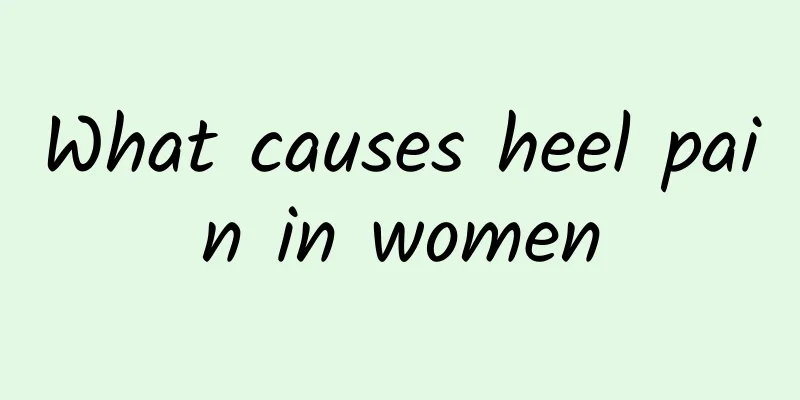What causes heel pain in women

|
There are many reasons why women experience heel pain, including both physiological and disease-related reasons. For example, some women like to wear high heels, and standing or walking for a long time will cause heel pain. Heel pain is also common for postpartum or pregnant women, because during this period, women gain weight, which will increase the pressure on the ankles and easily cause heel pain. Why do I have heel pain after confinement? The first reason for postpartum heel pain is that women did not get up and exercise in time during the confinement period, and lay in bed for a long time, causing the fat in the heels to degenerate. Once the confinement period is over, the heels cannot bear the weight of the body, and heel pain naturally occurs. Secondly, weight gain in women during the confinement period is also a reason. Weight gain during the confinement period is also a reason. Finally, it is also a common situation that women do not pay attention to wearing socks during the confinement period. They like to wear slippers and sandals, which exposes their heels and causes poor blood circulation, which is also commonly known as "confinement disease." Postpartum heel pain should pay attention to the following points: First, keep your feet warm after giving birth, wear socks, and avoid wearing sandals or slippers that expose your heels. Second, you can choose to soak your feet frequently and apply Chinese medicine externally to promote blood circulation and achieve the purpose of reducing swelling, inflammation and analgesia. Third, if the situation is serious, consider seeking medical treatment, as it may be caused by other diseases. Therefore, postpartum heel pain is not necessarily a gynecological disease, nor is it a postpartum disease that cannot be cured in a lifetime. However, heel pain may also be caused by: First, ligament inflammation Ligaments are tissues that connect two bones, and ligament inflammation is a type of aseptic inflammation, which manifests as chronic pain without swelling, itching, or fever. When people walk, the ligaments in the heel are repeatedly pulled, causing repeated attacks of pain. Weight also has a certain relationship with the pain. The heavier the weight, the more likely it is to have heel pain. Second, high heels cause When women often wear high heels, the bones, muscles, and ligaments in their feet are under greater pressure than usual, resulting in uneven force on the soles of the feet and heel pain. Third, plantar fasciitis The plantar fascia is a tissue that maintains the normal arch of the foot, cushions shock and maintains elasticity. However, long-term walking and weight-bearing can cause damage to the plantar fascia and aseptic inflammation, which manifests as heel pain and discomfort, with the pain worsening in the morning and when walking. Fourth, bone spurs Bone spurs appear in the heel area, which is more common in elderly patients. X-rays show bone spurs of varying sizes formed at the bone joints. Bone spurs cause local tissue friction and strain, and may also cause aseptic inflammation. The degree of pain is related to the size of the bone spur. |
<<: What to do if your heels are dry and cracked in the summer
Recommend
What should not be eaten after getting rabies vaccine
Dogs are human beings’ best companions and are al...
The effect of boiling water with old loofah tendons
Every autumn, the old cucumbers growing on the vi...
Can Cordyceps and Wolfberry be soaked in water and drunk together?
Cordyceps and wolfberry are both Chinese herbal m...
Vitamin K3
Everyone should know about vitamins. Vitamins are...
How to treat acne
Acne is a common skin symptom. If acne keeps appe...
Treatment of acute suppurative parotitis
Mumps is a common disease that occurs frequently ...
What's the matter with the sudden stabbing pain in the calf?
If you suddenly experience tingling pain in your ...
What are the benefits of saffron foot bath?
There are many benefits of soaking your feet in s...
The benefits of eating Houttuynia
Houttuynia cordata is a special food because it c...
How to treat fungal lung infection
If you have a fungal infection in the lungs, you ...
What medicine is good for children's itching
We all know that allergies are very common in chi...
Symptoms of mild cerebral infarction, don’t ignore this body signal!
Mild cerebral infarction is also a mild cerebral ...
The benefits and contraindications of oysters
Now is the season for eating oysters. Oysters at ...
What can't I do when my period comes?
There are many things to pay attention to during ...
Chinese patent medicine for night sweats
Everyone has some understanding of night sweats. ...









